From Erin: Because Will and I both speak Spanish and have a huge heart for other cultures, language learning is very important to us. It’s one reason we took our girls to Costa Rica for 5 weeks this past summer!
Will is actually a high school Spanish teacher, so he knows what he’s talking about when it comes to language learning!
Whether you homeschool and are looking to add language learning to your school day or are interested in augmenting the language learning your children are already experiencing in their schools, I hope you will appreciate these 6 ways to encourage language learning in your home!
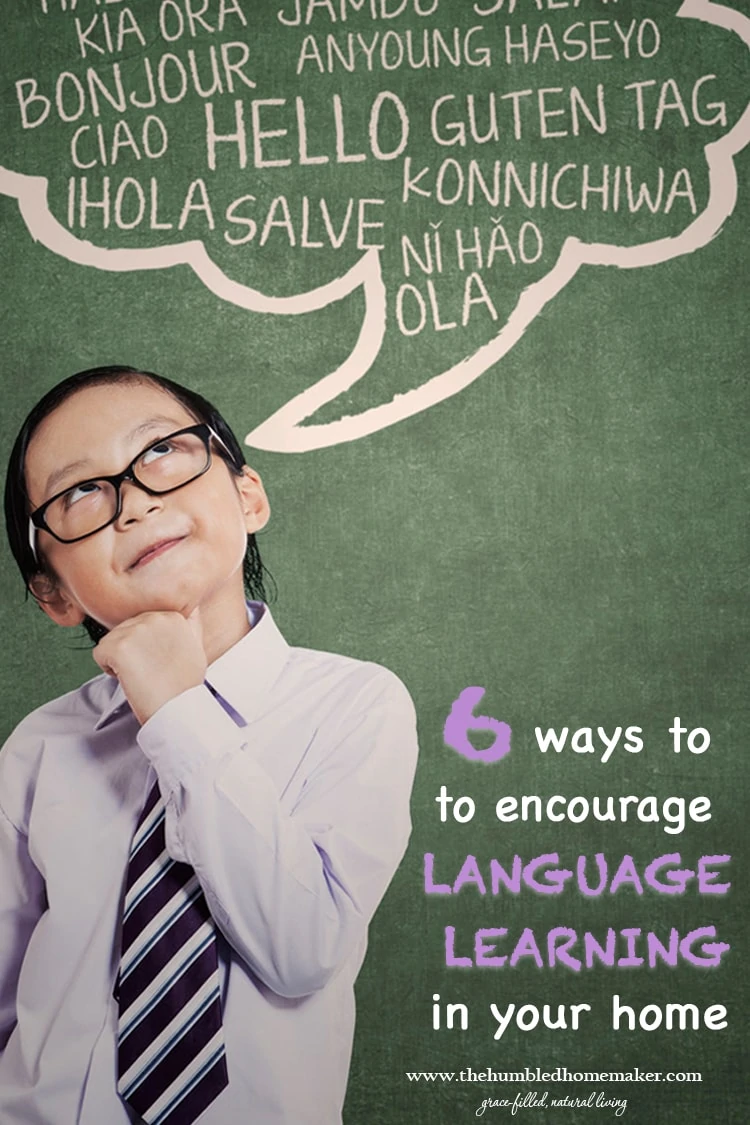
By Will Odom, Contributing Writer (and Erin’s hubby!)
There is an old joke that asks, what do you call someone who speaks:
- three languages? Trilingual.
- two languages? Bilingual.
- one language? American*
As a Spanish teacher, I find this joke bothersome since only about 25% of Americans1 speak another language compared to over 50% of Europeans2.
Though these numbers may not be completely accurate3, we cannot deny the importance of language learning for the interconnected world in which we live.
I do think over the last decade that this is changing. Many schools are starting language learning earlier, and bilingual schools have successfully popped up all over the country.
While the joke is increasingly untrue, there is still a gap with language learning in the U.S.
Whether you travel or not, the world is becoming a smaller place. Through immigration and technology, the world is at our doorstep.
Chances are you have a neighbor who speaks another language, you work with someone from another country, or you hear other languages as you run errands throughout the day.
In addition, if we want our children to be globally competent, competitive citizens, learning another language is paramount.
There are many possible benefits to speaking another language:
- provides better job opportunities
- delays Alzheimer’s or dementia
- opens doors to travel and cultural appreciation
- develops worldview and awareness of influences
- promotes brain development
- fosters creativity and critical thinking
- allows for new friendships
- gives a chance to assist or serve others
- moves you from an observer to a participant
- increases knowledge of native language
When it comes to language learning, younger children are sponges.
Their brains can soak up new concepts much faster than those of adults. There are many theories on how and why this works, but I don’t have time to go into all of them.
However, if you want your children to learn another language, now is the time to start teaching them. Don’t wait until they get to high school.
There are several things you can start doing now that will foster language learning and cultural appreciation.
6 Ways to Encourage Language Learning in Your Home
1) Movies/TV Shows
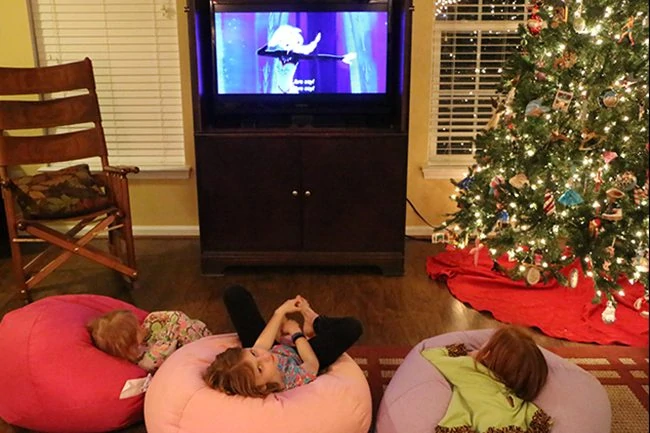
In order to learn a language, kids need comprehensible input, meaning they need to understand a certain percentage of what they are hearing and/or associate it with a concept.
Watching movies and TV shows in different languages are great ways to introduce some of these areas.
If they have seen the show or are familiar with the characters, they can draw from previous knowledge to make those connections.
If your child as watched Frozen (or any other movie) a million times in English, switch the language and let them listen to the movie and songs in another language.
My girls love singing “Libre Soy” just as much as the English version, “Let it Go.”
Certain shows like “Plaza Sesamo” (Sesame Street) or LeapFrog Letter Factory are excellent for introducing letters, numbers, etc.
This summer in Costa Rica, our girls watched Strawberry Shortcake (Rosita Fresita) and My Little Pony and Mickey Mouse Club House in Spanish and were picking up words as they sang the songs and listened to the dialogs.
Many of these shows can be found in Spanish on Youtube, and DVDs will often have various language options.
Just make sure you check the languages before buying it.
2) Games/Apps
A sure fire way to get kids excited about learning a language is through apps and games.
Classic games such as memory, go fish, etc. are an excellent want to introduce phrases and words.
A quick search in any Android or Apple store will yield a plethora of activities like Spanish School Bus that are fun and educational.
One of our girls’ favorite apps is the Princesses Learn Spanish app (in-app purchases).
It has princess stories in Spanish and allows them to read the story or play games with some of the words.
I also like the Me Divierto en Inglés version of this app since the majority of the text is in Spanish and not just a few words.
3) Music 
Learning set to music is one of the most effective ways to learn aspects of a language.
There are a ton of canciones infantiles (children’s songs) that kids already know and are familiar with from school or church.
There are countless videos on youtube with songs that teach vocabulary or conversation phrases. You can take anything and set it to a song to learn whatever concept you need to focus on at the time.
4) Books
Whether you are reading to your child or your child is reading on their own, there are numerous bilingual books, like Dora’s Book of Words, or classic books in the target language, like “Oso pardo, oso pardo, ¿qué ves ahi?”
Find books in the target language that interest your kids and let them dive in to discover a whole new world.
5) Friends
One of the absolute best ways to broaden your child’s worldview and learn a new language is to expose them to other children that are speaking another language.
This summer in Costa Rica my children often played with others kids that didn’t speak English. They quickly learned new phrases and words in order to communicate, and they had a blast.
Occasionally, they needed to ask me how to say something, but those questions were born of necessity and were easier internalized.
The need for the language was real time, and they had no problem using it.
There was also a lot of charades involved.
In our case, we also have family members who are native Spanish speakers, so all of the girls’ cousins on my wife’s side of the family are bilingual.
(Both Erin’s sister and brother married Argentines, and Erin and I both were already proficient in Spanish from living in Costa Rica, where we met!)
6) Curriculum
I am always on the lookout for a good curriculum to use with my kids, especially since our daughter attends a university model school and is homeschooled a couple of days a week.
We have wanted to augment her Spanish learning, but I have always been frustrated with other curriculums.
Then I found Calico Spanish, and it is, by far, the BEST homeschool Spanish program that I have come across.
On a basic level, the innovative curriculum incorporates the first 4 areas that I listed above. It uses music, videos, games, and books to engage students in active language learning that is based on developmental research.
They aren’t just learning random sets of words. They are actually learning usable chunks of language in short, repetitive lessons that are plainly laid out.
These lessons require very little preparation on the part of the parent.
You don’t even have to speak Spanish to teach this to your kids. It is remarkably user-friendly and accessible.
I have been incredibly impressed with the curriculum. And, more importantly, the girls have been enthralled with it as well.
After going through one lesson and viewing the videos and songs, they were asking to do another lesson and watch more videos and sing more songs.
My 5-year-old even asked me one day when we were going to do more Spanish. And that is saying a lot since she was the child that had the hardest time in Costa Rica this summer.
In addition to the songs, games and videos, children read stories and recreate the language with flash cards, making the learning interactive and student-focused.
In level A, children meet Pedro Pez (fish) and María Mona (monkey) and will learn greetings, introductions, describing themselves, and discussing about things they like.
In level B, they will meet new characters and continue to expand their language by describing their families, expressing their feelings, and talking about months, numbers, etc.
You can check out all the learning objectives for levels A and B at the Calico Spanish homeschool page.
They also offer a free lesson that gives you access to the full 10-day lesson 1 for level A. It is a great place to start to explore this ingenious curriculum.
For any homeschool family or anyone looking to augment Spanish language learning, Calico Spanish is an essential program that will establish the fundamentals that children need to be successful at language learning.
Enter to WIN Level A of Calico Spanish via the Entry Form Below!!
What do you do to foster language learning or cultural curiosity in your home?
(* I use the term “American” to refer to someone born in the U.S.A. I acknowledge that anyone from North or South America can be considered Americans. However, unlike some other languages, there is not another word in English to categorize someone from the U.S. except American. For example, Spanish uses the word “estadounidense” to mean someone from the U.S. I know this may not be a big deal to some or even comprehensible, but for some of other cultures, it is.)
Thank you, Calico Spanish, for sponsoring this post!

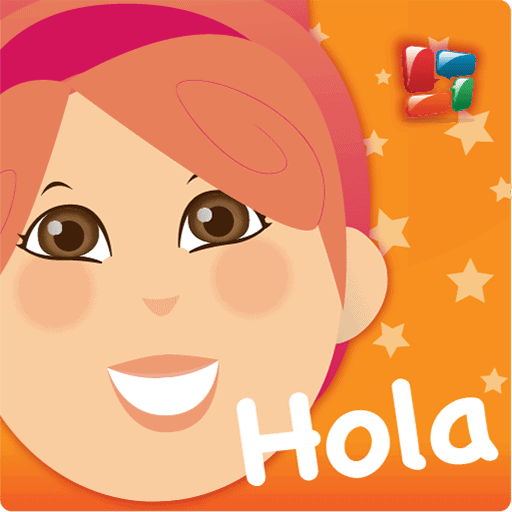
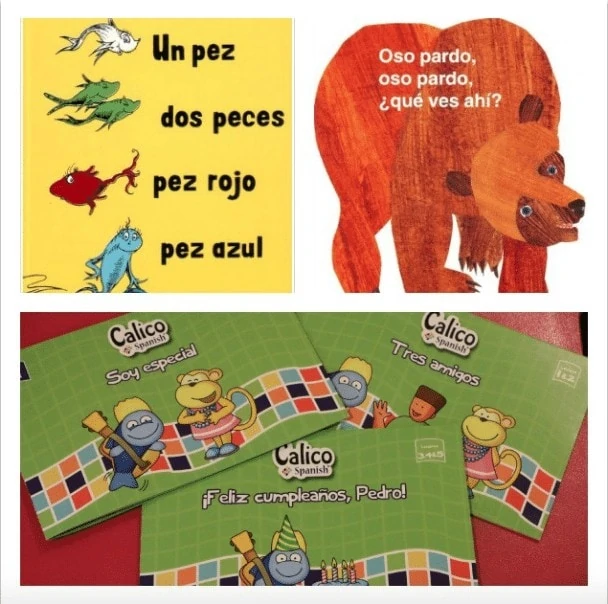

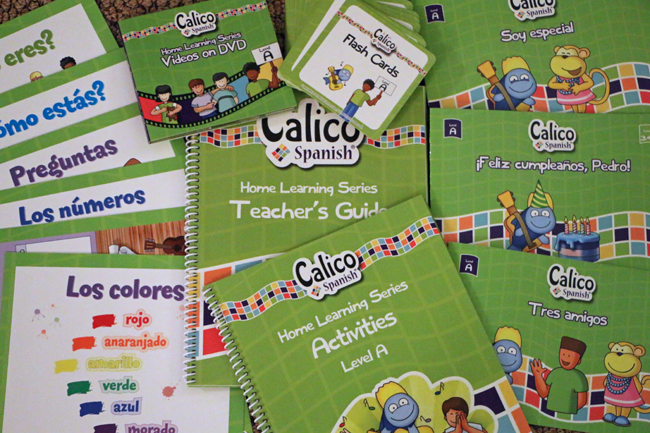




sarah
I will definitely be checking out this curriculum. I have been looking for a Spanish curriculum for my kids for quite a while and haven’t found anything I am in love with yet.
Rebecca
The frustrating thing for us is that we want to teach our daughter German, but it’s very hard to find media in German in the U.S.A. We brought some home with us when we visited Germany, but it’s really annoying to get anything new. :/
Ellen Wood
I’m trying to learn German too (for work) and it is difficult to find anything if you aren’t a student signing up for your highs school elective language! I did purchase an app for my phone/tablet called Nemo in German, and my 7yo is learning faster than I am.
Missy
I agree! German language media is very rare in the U.S. We are raising our children bilingually (German & English) and we’ve put in our budget one shipment a year of books, cds. and dvds from amazon.de. We usually do this around Christmas & spread the goodies out over birthdays & holidays. I highly recommend cds and/or dvds from Simone Sommerland–excellent! Also, I don’t know where you live, but I’ve been pleasantly surprised with the number of natives speakers in my area (some even with kids my girls’ ages!).
Mama2eight
I agree. I just use the shortest way to say it, U.S. citizens. Because I am very aware that we are not the only Americans. I use my limited Spanish at work often. It’s functional, but I forget all tenses besides present. I also communicate in ASL. I’m more fluent in ASL because I use it more. And the Deaf are usually very willing to help you learn their language. Most are bilingual: ASL and English. English is their second language.
If I had someone to use this program with, I would be interested. When my older children were still in school, I was looking for something to teach spanish. We live in southern California. My street has more Spanish than English spoken.
watergoblins
I’ve tried the free lessons for the Calico Spanish and they are great. Thanks for all the other tips on where to find ways to teach. We are a homeschooling family and it gets expensive. So free resources or library books always help!
Susie B.
I feel compelled to give a quick defense to the American uni-lingualism…well, you know what I mean. In Europe, there are countries with their own language that are no bigger than Rhode Island and they’re surrounded by other countries that each have their own language. Learning a second language in Europe is not only practical, but often a must as they’re so readily exposed to other languages on a day to day basis. Our Canadian neighbors largely speak English, and the Spanish spoken by our southern neighbor probably accounts for the 25% bilingual speakers we do have and I think that’s pretty good. Europe is not more bilingual because they’re better than us. It’s simply the logistics of necessity (which is likewise why our English-Spanish bilingualism is increasing because more Spanish speakers have moved here).
Will O
Thanks for your comment Susie. I understand your point. Just to clarify, I don’t think Europe is more bilingual because they are better. I think they are more bilingual because they put more emphasis on language learning, even starting their children learning second language much earlier than we do. That is changing in the U.S. with immersion schools and other options, so I’m glad to see that progress. I would also agree that our Canadian neighbors are more multilingual than we are. I have lived in Vancouver and visited eastern French-speaking Canada and found them more multilingual than most of the U.S. Again, I think that is changing in our educational system and with our growing immigrant population, so I’m excited about those changes.
Kristi
Bilingual Canadian checking in (though I also speak basic Spanish and a smattering of a few other languages). In general the latest you start learning a second language in Canada is when you’re 8 years old, but in English Canada, there is a very popular program called French immersion that start in kindergarten. And, we also have one of the largest foreign-born populations in the world, so a lot of other languages are also widely spoken (Mandarin, Cantonese, Punjabi, Hindi, Tagalog, for example). It’s not Europe, but I wouldn’t describe Canada as unilingual. And the number of people with a passive understanding (ie can understand but not necessarily speak) is higher – so there’s sort of ‘invisible’ bilingualism (ie watch what you say on the bus people may understand you!).
Laura
If you do not homeschool, check your area for immersion programs. My boys attend a K-12 Spanish immersion program. They were fluent by 3rd grade. All of the benefits you posted are true but it goes way beyond that with data to back it up.
We love our school and my boys are thriving.
Erin
Our nephew is in an immersion school! We think that is a great option!!
Christy G.
Do you have any suggestions for teens wanting to learn another language not taught in school? My 14yo is taking Spanish 2 this year, and toying with Spanish 3 next year or switching to Chinese or Arabic, neither of which are offered at his school.
Thanks for any insights.
Erin
I would look into online programs for sure.